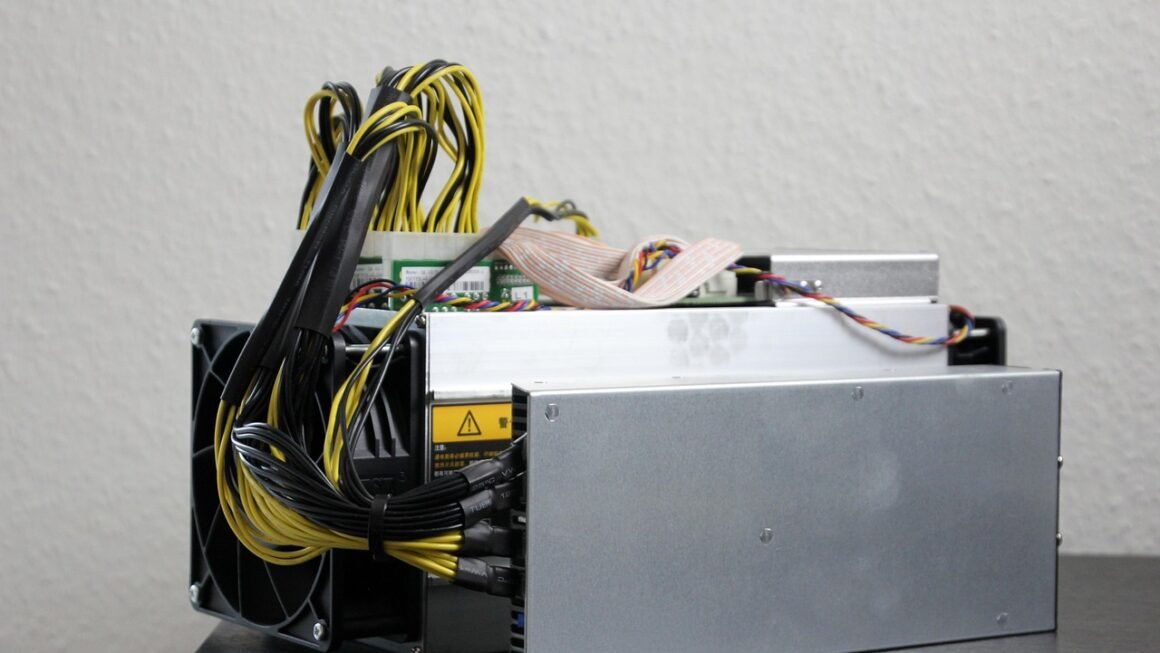Smart contracts are rapidly transforming the digital landscape, offering automated, secure, and transparent ways to execute agreements. These self-executing contracts, written in code and deployed on blockchain networks, are revolutionizing industries from finance and supply chain management to healthcare and real estate. Let’s dive into the world of smart contracts and explore their functionalities, benefits, and real-world applications.
Understanding Smart Contracts
Smart contracts are not contracts in the traditional legal sense but rather pieces of code that automatically execute when predefined conditions are met. Think of them as digital vending machines: you put in the required input (cryptocurrency, in many cases), and if the conditions are met, you receive the desired output (digital asset, access to a service, etc.).
What are Smart Contracts?
- Smart contracts are self-executing agreements written in code.
- They reside on a blockchain, ensuring immutability and transparency.
- They automate the execution of a contract when specified conditions are satisfied.
- They eliminate the need for intermediaries, reducing costs and increasing efficiency.
How Smart Contracts Work
Smart contracts function based on “if-then” statements. The code defines the terms of the agreement and the actions to be taken when certain conditions are met. For instance:
- If a payment is received, then release the digital asset.
- If a certain date is reached, then distribute funds proportionally.
- If a shipment arrives at the designated location, then trigger payment to the supplier.
These conditions are verifiable on the blockchain, making the execution transparent and auditable. The beauty lies in their autonomy; once deployed, they run exactly as programmed, eliminating subjective interpretation and human error.
Key Characteristics of Smart Contracts
- Autonomous: Execute automatically without intervention.
- Decentralized: Operates on a blockchain network, eliminating central control.
- Immutable: Once deployed, the code cannot be altered.
- Transparent: All transactions and code are publicly verifiable on the blockchain.
- Secure: Leveraging the security of the underlying blockchain.
Benefits of Using Smart Contracts
Smart contracts offer a multitude of advantages over traditional contracts, streamlining processes and enhancing trust. These advantages are crucial for businesses looking to innovate and optimize their operations.
Increased Efficiency and Speed
- Automation: Automates tasks, reducing manual effort and processing time.
- Faster Transactions: Executes transactions in near real-time, eliminating delays.
- Reduced Paperwork: Eliminates the need for extensive paperwork and documentation.
Enhanced Security and Trust
- Immutability: Prevents tampering and fraud, ensuring data integrity.
- Transparency: Provides a clear and verifiable audit trail, fostering trust.
- Decentralization: Reduces the risk of single points of failure and censorship.
Cost Reduction
- Elimination of Intermediaries: Removes the need for lawyers, escrow services, and other intermediaries, saving costs.
- Reduced Transaction Fees: Lower transaction fees compared to traditional methods.
- Streamlined Processes: Simplifies and automates complex processes, reducing operational costs.
Example: Supply Chain Management
Consider a supply chain using smart contracts to automate payment upon delivery. Once a shipment reaches its destination and the delivery is verified on the blockchain (perhaps using IoT sensors), the smart contract automatically releases payment to the supplier. This eliminates delays caused by manual invoice processing and reduces the risk of disputes.
Practical Applications of Smart Contracts
Smart contracts are finding applications across diverse industries, transforming how businesses operate and interact.
Finance
- Decentralized Finance (DeFi): Enables lending, borrowing, and trading without traditional financial institutions. Examples include decentralized exchanges (DEXs) like Uniswap and Aave.
- Automated Escrow Services: Provides secure escrow services for transactions, ensuring funds are released only when predefined conditions are met.
- Tokenization of Assets: Allows for the fractional ownership of assets such as real estate and art, making them more accessible to investors.
Supply Chain Management
- Tracking and Traceability: Provides end-to-end visibility of goods, ensuring authenticity and provenance.
- Automated Payments: Automates payments to suppliers upon delivery confirmation.
- Inventory Management: Optimizes inventory levels based on real-time data and demand forecasts.
Healthcare
- Secure Data Sharing: Enables secure and controlled sharing of patient data among healthcare providers.
- Automated Insurance Claims: Automates the processing of insurance claims based on predefined criteria.
- Pharmaceutical Supply Chain: Tracks and verifies the authenticity of pharmaceuticals, preventing counterfeiting.
Real Estate
- Automated Property Transfers: Simplifies and automates the transfer of property ownership.
- Smart Mortgages: Enables smart mortgages with automated payments and transparent terms.
- Tokenized Real Estate: Allows for fractional ownership of real estate, making it more accessible to investors.
Example: Voting Systems
Smart contracts can power secure and transparent online voting systems. Each vote is recorded on the blockchain, making it tamper-proof and auditable. The results are automatically tallied and verified, eliminating the potential for fraud and manipulation.
Developing and Deploying Smart Contracts
Creating and deploying smart contracts requires a specific skillset and knowledge of blockchain technology.
Choosing a Blockchain Platform
- Ethereum: The most popular platform for smart contract development, using Solidity as its primary programming language.
- Binance Smart Chain: Offers faster transaction speeds and lower fees compared to Ethereum, compatible with Ethereum Virtual Machine (EVM).
- Solana: Known for its high throughput and scalability, using Rust as its primary programming language.
- Cardano: Emphasizes security and sustainability, using Haskell-based Plutus as its programming language.
The choice of platform depends on factors such as transaction speed, cost, security requirements, and development tooling.
Programming Languages
- Solidity: The most widely used language for Ethereum smart contracts.
- Vyper: A Python-like language for Ethereum smart contracts, emphasizing security.
- Rust: Used for developing smart contracts on Solana.
- Plutus: Used for developing smart contracts on Cardano.
Development Tools and Frameworks
- Remix IDE: An online Solidity IDE for writing, compiling, and debugging smart contracts.
- Truffle Suite: A comprehensive development environment for building, testing, and deploying smart contracts.
- Hardhat: A flexible and extensible development environment for Ethereum smart contracts.
- Ganache: A personal blockchain for local smart contract development and testing.
Deployment Process
Security Considerations for Smart Contracts
Smart contracts, while powerful, are susceptible to vulnerabilities if not properly designed and audited. Security is paramount to prevent exploitation and protect user funds.
Common Vulnerabilities
- Reentrancy Attacks: Allows an attacker to repeatedly withdraw funds before the contract updates its balance.
- Integer Overflow/Underflow: Occurs when arithmetic operations result in values exceeding or falling below the allowed range.
- Denial of Service (DoS): Prevents legitimate users from accessing or using the contract.
- Front Running: Allows an attacker to execute a transaction before a pending transaction with a higher gas price.
- Logic Errors: Flaws in the contract’s logic that can be exploited by attackers.
Best Practices for Security
- Thorough Auditing: Engage professional auditors to review the code for vulnerabilities.
- Formal Verification: Use formal verification techniques to mathematically prove the correctness of the code.
- Bug Bounty Programs: Incentivize white-hat hackers to find and report vulnerabilities.
- Secure Coding Practices: Follow secure coding guidelines and best practices.
- Regular Updates: Continuously monitor and update the contract to address newly discovered vulnerabilities.
Example: The DAO Hack
The DAO (Decentralized Autonomous Organization) hack in 2016 highlighted the importance of smart contract security. A vulnerability in the DAO’s smart contract allowed an attacker to drain approximately $50 million worth of Ether. This event underscored the need for rigorous auditing and security measures.
Conclusion
Smart contracts are a transformative technology with the potential to revolutionize various industries by providing enhanced security, transparency, and efficiency. By understanding their functionalities, benefits, and potential risks, businesses and developers can leverage smart contracts to create innovative solutions and streamline existing processes. As blockchain technology continues to evolve, smart contracts will undoubtedly play an increasingly significant role in shaping the future of digital agreements and transactions.



